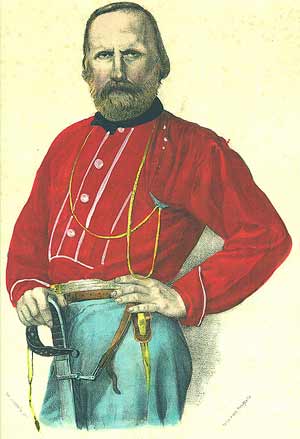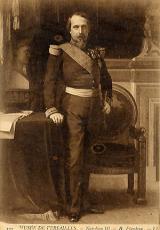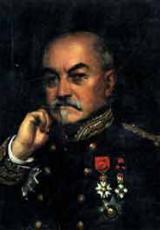Victor-Emmanuel II

King of Sardinia then of Italy (Turin, 14 March 1820 - Rome, 9 January 1878)
Victor Emmanuel's life mirrors developments in the Italian Peninsula through most of the 19th century. He was the son of Charles Albert and of Queen Theresa, the daughter of the Grand Duke Ferdinand of Tuscany. Italy's two most prominent families, in other words, bequeathed him their combined influence. His marriage to Maria Adelaide of Austria bears witness to the weight that the Hapsburgs of Vienna had had since the days of Charles Quint. This alliance served him well when his father abdicated in his favour on 23 March 1849, while the war with Austria was raging. Victor Emmanuel was constrained to sign the Treaty of Milan on 6 August 1849, but remained true to his father's promises and to the dynasty's plans to build a unified and free Italian state. He preserved the Piedmont's constitutional status (the Proclamation of Moncalieri) in defiance of Austria's demands - even if doing so entailed consenting to Imperial troops occupying part of that region. He championed freedom, and was nicknamed the re galatuomo (gentleman king). He chose his advisors wisely. He appointed one of them, the Count of Cavour, Prime Minister in 1852.
His foreign-policy agenda involved cementing Italy's identity and its presence in the concert of nations. Sending General La Marmora to Crimea in 1855 earned Italy a seat in the Congress of Paris. The July 1858 interview at Plombières between the Count of Cavour and Napoleon III, and the ensuing January 1859 military agreement, earned him an ally in his ongoing conflict with Vienna and ushered in a new dynasty (Clotilde married Napoleon III's first cousin, prince Jerome). Victor Emmanuel excelled in Palestro (one of the 1859 war battles), won the battle of Solferino, entered Milan as a liberator and went on to unify Italy's armed forces in spite of Napoleon's defection (he had signed an armistice with Austria in Villafranca by then). Sardinian troops annexed Parma, Modena and the Romagnas in 1860. In exchange, Victor Emmanuel agreed to hand over Nice and Savoy to France in the 24 March 1860 Treaty of Turin.
The Kingdom of the Two Sicilies fell to Garibaldi's "Thousand" expedition, which the Piedmont government secretly endorsed. Italy was unified from a military standpoint, and the Italian Senate acknowledged Victor Emmanuel as that country's king by 129 votes for and 2 against shortly thereafter.
He thus became Italy's constitutional king on 14 March 1861. His policy was one of moderation: he cooled the ardour of Garibaldi's partisans, moved to ease tension with the Holy See, and backed Cavour's work on the economic and diplomatic front. Napoleon III's mediation at the October 1865 Biarritz Interview allowed him to form an alliance with Bismarck's Prussia in the 1866 Austro-Prussian War. He then incorporated Venetia as a result of the Prague and Vienna treaties. The defeat of France - a difficult ally - in 1870 opened up an opportunity to occupy Rome that year, and to enter it on 2 July 1871. He spent his last years on the throne consolidating Italy and - especially - cementing the territory. That led him to conduct an "offensive" border occupation and control policy. Hostility to France's Third Republic materialised in the Alps, with the fortification of Tende in response to the Séré de Rivières system.

Portrait de Garibaldi. Source www.fuhsd.net



